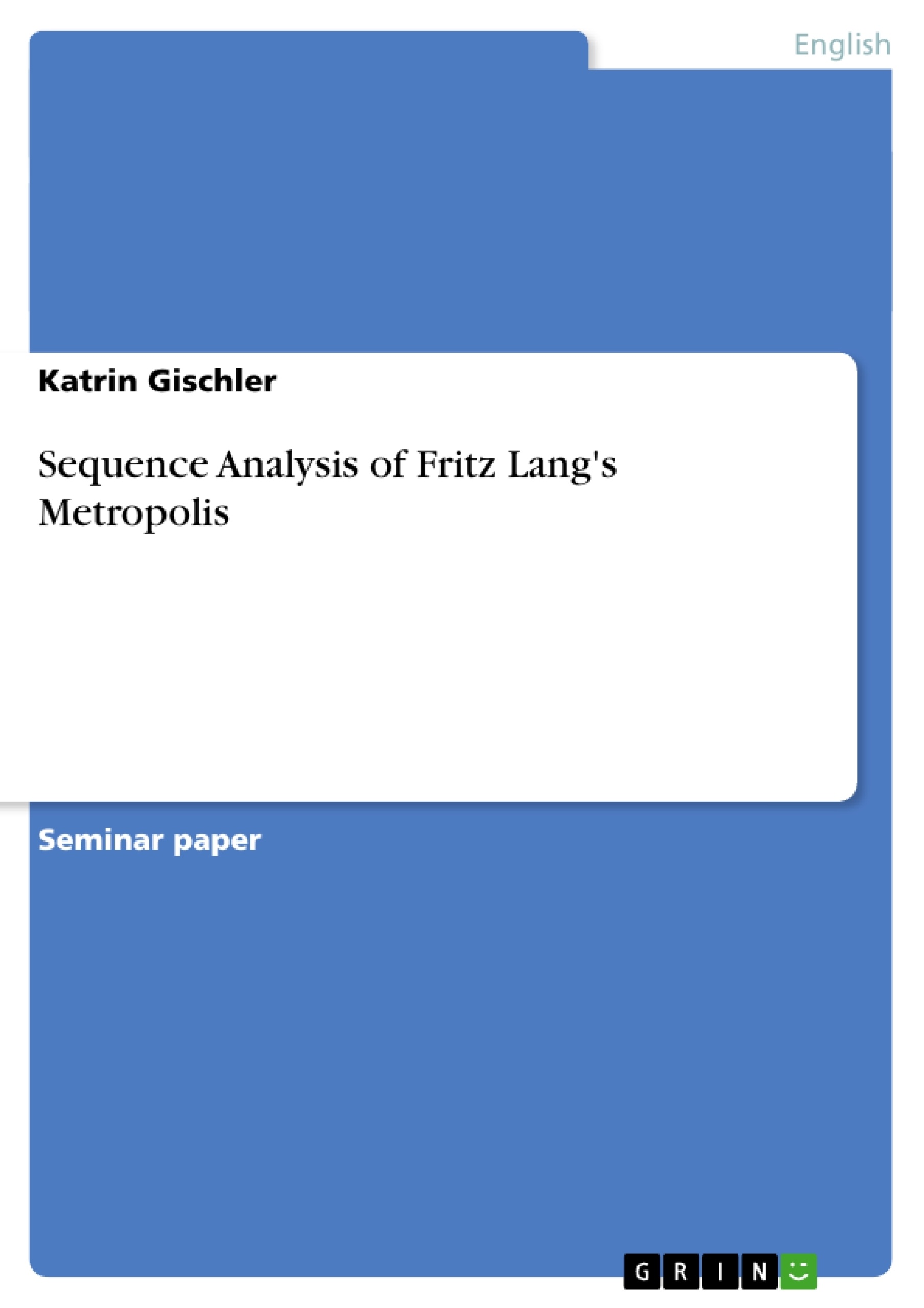Urban modernity, Berlin’s “Golden Twenties”, the cinematographic city -no other movie evokes these clichés more vividly than Fritz Lang’s Metropolis. Since its publication in 1926/27 it has ever again been praised but also brought a lot of criticism among the audience and reviewers.Metropolisstands out from the fantastic film of the silent film era and introduced a new genre in Germany, science-fiction. It compounds motifs of expressionism, “Neue[r] Sachlichkeit”, and pulp fiction. Moreover, there are elements of film noir, which connects elements of expressionism and French poetic realism. These elements became obvious in the Father-Son conflict, the existence of a double, the architecture, and the camera-and lighting effects (bright/ dark contrasts/ low-key lighting, iris shatter). Lang manipulated the lighting in Metropolis to reflect harsh contrasts between humanity and technology. Lang’s mammoth piece still has a huge impact on contemporary film as we can see inStar Wars(1977),Blade Runner(1982), and The Fifth Element(1997).
In this following paper I’m going to analyse a ten-minute sequence that starts in the eternal garden and ends after the explosion in the underworld of the workers. I will focus my analysis on editing, i.e. camera shots, and lighting since both parts play a very- if not the most- important role for the narrative ofMetropolis.Moreover, the camera shots used and some invented inMetropolisgave way for the following and contemporary films.
In this piece of work the original version ofMetropolis-which has been restored by the Friedrich-Wilhelm Murnau foundation- and was seen in the premiere on 10 January 1927, serves as a primary source.
Table of Contents
- Introduction
- Sequence Analysis
- Conclusion
Objectives and Key Themes
This essay analyzes a ten-minute sequence from Fritz Lang's Metropolis, focusing on editing, camera shots, and lighting, and their impact on the film's narrative. The analysis draws upon the original, restored version of Metropolis, exploring how its visual elements contribute to the film's unique style and impact on later cinematic works.
- The role of editing and camera shots in creating the narrative of Metropolis
- The impact of lighting on the contrasting worlds of the film
- The influence of Metropolis on subsequent cinematic works
- The use of visual techniques to convey specific themes and emotions
- The visual representation of the father-son conflict and the existence of a double
Chapter Summaries
The Introduction provides context for the analysis, highlighting the film's significance in the context of urban modernity, German cinema, and its influence on science fiction. It also outlines the specific focus of the essay on the analysis of a ten-minute sequence.
The Sequence Analysis chapter focuses on the specific visual elements of the chosen sequence. It examines the use of establishing shots, point of view shots, iris in, and lighting to create a dynamic and layered narrative. The analysis explores how these techniques are used to depict the contrasting worlds of the film, the characters' emotions, and the development of the plot.
Keywords
Metropolis, Fritz Lang, editing, camera shots, lighting, expressionism, "Neue[r] Sachlichkeit", science fiction, film noir, urban modernity, father-son conflict, double, visual narrative, contrast, establishing shot, point of view shot, iris in.
- Citation du texte
- Katrin Gischler (Auteur), 2005, Sequence Analysis of Fritz Lang's Metropolis, Munich, GRIN Verlag, https://www.grin.com/document/47123




